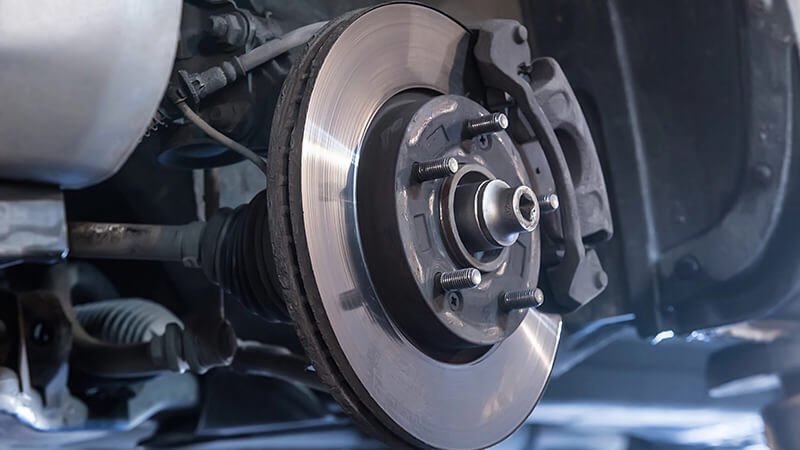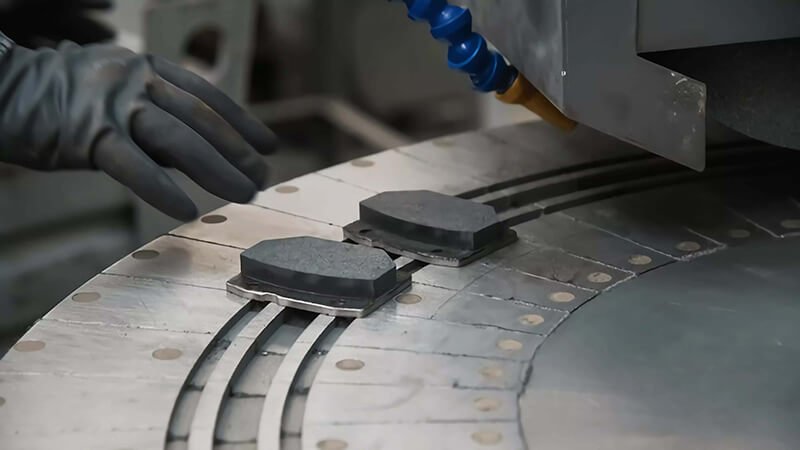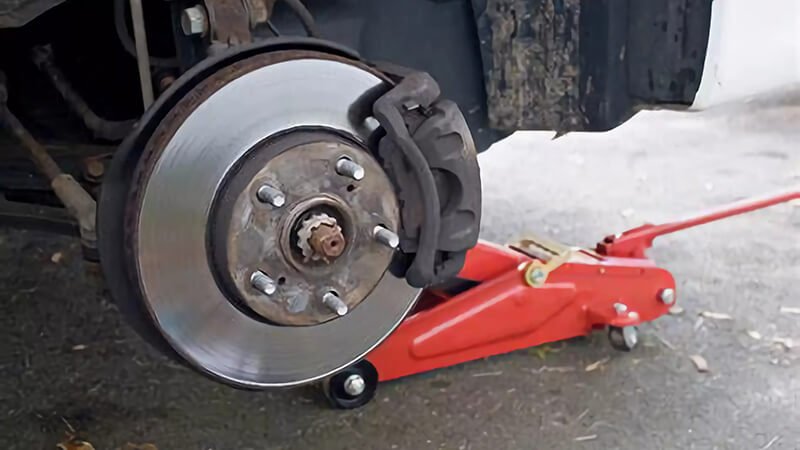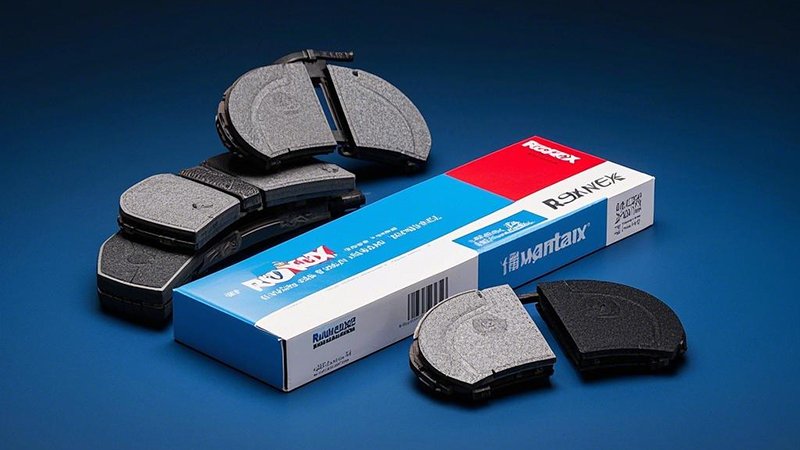When it comes to brake pads and rotors, many car owners wonder if they can simply pick up any part and expect it to fit their vehicle. The truth is, brake pads and rotors are not universal. There are several factors that determine compatibility, and choosing the wrong one can affect your vehicle's safety and performance.
Brake pads and rotors are not interchangeable across all vehicles. Each vehicle’s braking system is uniquely designed with specific dimensions and configurations. While some pads and rotors may work within similar models, they are not universally compatible.
Understanding the complexities of brake pad and rotor compatibility is essential for making the right choice for your vehicle. Let’s explore the factors that determine whether brake pads and rotors can be mixed and matched, and why not all parts are interchangeable.

Are All Brake Pads and Rotors Compatible?
The compatibility of brake pads and rotors depends on the specific make, model, and year of your vehicle. While it might seem like all pads and rotors should work similarly, the reality is that different vehicles require different specifications for their braking systems.
Brake pads and rotors are designed to match your vehicle's specific brake system. The dimensions, mounting points, and materials of the parts must align with the manufacturer’s specifications to ensure safe and efficient braking.
The compatibility of brake pads and rotors1 is a crucial factor in maintaining your vehicle’s braking system. When you select a part that doesn’t match the specifications of your vehicle, it can compromise both safety and performance. Here’s why:
Vehicle-Specific Designs
Each car model has a unique brake system designed for specific requirements. The dimensions of the rotors and the type of brake pads vary depending on the vehicle's weight, engine power, and intended use. For example, high-performance vehicles have larger, vented rotors and specialized pads that can handle higher heat generated during intense braking. On the other hand, compact cars typically use smaller, simpler braking systems.
| Vehicle Type | Rotor Size & Design | Brake Pad Type | Typical Material | Ideal Driving Conditions |
|---|---|---|---|---|
| Heavy-duty Trucks | Large, vented, robust | Semi-metallic | Steel, Copper | Towing, highway driving |
| Sports Cars | Larger, drilled or slotted | Ceramic | Ceramic | High-speed, aggressive braking |
| Sedans & Compact Cars | Smaller, solid or vented | Organic or Semi-metallic | Rubber, Glass | City driving, light braking |
The mounting points for brake pads also differ, meaning the pads that fit one vehicle may not align with another, even if the vehicles are from the same manufacturer. This makes it essential to consult your vehicle's specifications before purchasing replacement parts.
Material Compatibility
Brake pads come in various materials, such as ceramic, metallic, and organic, each offering different performance characteristics. A rotor designed for a particular type of pad may not be compatible with another material. For instance, a rotor designed for a ceramic pad may not provide optimal performance when paired with metallic pads, as each material generates different amounts of heat and friction.
| Material Type | Performance Characteristics | Pros | Cons |
|---|---|---|---|
| Organic Pads | Softer, lower friction | Quieter, less brake dust | Wear out quicker, less heat resistance |
| Metallic Pads | Higher friction, durable | Excellent heat resistance, longer lifespan | Noisy, more brake dust |
| Ceramic Pads | Balanced performance | Quieter, less dust, smoother braking | More expensive, can be brittle |
| Semi-metallic Pads | Versatile, high-performance | Good all-around performance | Noisier, higher wear on rotors |
Choosing the right combination of brake pads and rotors based on material compatibility2 is crucial for maintaining the efficiency and safety of your vehicle's braking system.
Manufacturer Specifications
Manufacturers provide detailed specifications for the brake components of their vehicles. These specifications ensure that the brake system functions optimally, with the right amount of friction and heat dissipation. Using parts that do not meet these specifications can result in reduced braking power, increased wear, or even brake failure. Therefore, following the manufacturer’s guidelines for brake parts is vital to maintaining the integrity of your vehicle's braking system.

Can I Mix and Match Brake Pads and Rotors?
Many people wonder if it’s okay to mix and match brake pads and rotors from different manufacturers or models. While this might seem like a cost-effective solution, mixing parts can lead to poor braking performance, safety risks, and costly repairs in the long run.
Mixing and matching brake pads and rotors is not recommended. Brake parts are engineered to work together as a system, and using mismatched components can cause uneven wear, vibration, and decreased performance.
While it may be tempting to save money by using mismatched brake pads and rotors, this decision can lead to serious problems. Here’s why mixing and matching is generally not a good idea:
Uneven Wear and Tear3
Brake pads and rotors are designed to work together in a balanced system. If you use a rotor designed for one type of pad with a different type of pad, the two may not mesh well. This can cause uneven wear, leading to reduced braking efficiency. Uneven wear also shortens the lifespan of both the pads and the rotors, leading to more frequent replacements and higher costs in the future.
| Problem | Cause | Result | Solution |
|---|---|---|---|
| Uneven Wear | Mismatched pads & rotors | Reduced braking efficiency, more wear | Use matching parts designed for your vehicle |
| Vibration | Mismatched friction surfaces | Noise, discomfort during braking | Ensure proper rotor and pad fit |
| Reduced Performance | Wrong material combinations | Longer stopping distances, poor heat dissipation | Always use compatible parts |
Vibration and Noise4
When mismatched components are used, they can cause vibrations during braking. This is because the friction surface of the brake pad may not align properly with the rotor, resulting in uneven contact. Not only does this affect braking performance, but it can also lead to annoying noise during braking.
Vibration and noise are indicators that your brake system is not functioning optimally, and continued use of mismatched components can cause long-term damage to the entire braking system.
Safety Risks5
The most important consideration when selecting brake pads and rotors is safety. If the parts do not work together as designed, your vehicle may not stop as efficiently or effectively, especially during emergency braking situations. This can lead to an increased risk of accidents. To ensure your safety, it’s essential to use parts that are designed to work together, as specified by the vehicle manufacturer.

Are Rotors and Pads Universal?
The short answer is no. Rotors and pads are not universal across all vehicles. Each vehicle model has a specific brake system, and using parts that are not designed for that system can lead to reduced performance and safety concerns.
No, rotors and pads are not universal. Each vehicle model has a specific brake system, and using parts that are not designed for that system can lead to reduced performance and safety concerns.
The misconception that brake pads and rotors are universal likely stems from the fact that many parts appear similar at first glance. However, the design of the brake system6 in each vehicle is tailored to the specific needs of that vehicle, making it essential to choose parts that match.
Unique Brake Systems for Different Vehicles
For example, heavy-duty trucks require large, robust rotors and pads capable of handling the weight and braking needs of the vehicle. In contrast, sports cars have performance-oriented braking systems that need high-performance rotors and pads to cope with high-speed braking. These differences make it impossible for brake pads and rotors7 to be universally interchangeable across all vehicles.
| Vehicle Type | Brake System Type | Rotor Size & Design | Brake Pad Type | Materials Used |
|---|---|---|---|---|
| Heavy-duty Trucks | High-performance, robust | Large, vented rotors | Semi-metallic, Organic | Steel, Copper, Carbon Fiber |
| Sports Cars | High-performance, lightweight | Larger, drilled/slotted rotors | Ceramic, Metallic | Ceramic, Carbon Composite |
| Family Sedans | Standard, balanced | Solid or vented rotors | Organic or Semi-metallic | Rubber, Glass, Steel |
The Importance of Vehicle-Specific Parts
When selecting brake pads and rotors, it’s crucial to adhere to the manufacturer’s recommendations. They have designed the vehicle’s braking system to work with specific parts that meet the vehicle’s performance and safety requirements. Failing to use compatible parts can result in inadequate braking performance, leading to potential accidents or costly repairs.

Do All Cars Use the Same Brakes and Rotors?
It’s important to recognize that not all cars use the same brakes and rotors. Vehicle manufacturers design their braking systems based on the vehicle’s size, weight, and intended use, meaning that brake parts vary widely between models.
No, not all cars use the same brakes and rotors. Different vehicles require different types of brake systems tailored to their size, weight, and performance needs. Always check compatibility before purchasing replacement parts.
The idea that all cars use the same brakes and rotors is simply not accurate. Every vehicle has a braking system tailored to its specific needs, which affects the design and specifications of the brake pads and rotors8. Here’s why:
Variations Based on Vehicle Type
The size and weight of a vehicle play a huge role in determining the type of brakes and rotors it uses. For example, larger vehicles like trucks and SUVs require bigger and more durable rotors and pads to handle the extra weight and force of stopping. On the other hand, smaller vehicles, like sedans or compact cars, typically use smaller, less robust brake systems.
| Vehicle Type | Rotor Size & Design | Brake Pad Type | Performance Focus |
|---|---|---|---|
| Large Trucks | Large, vented rotors | Semi-metallic, Organic | Towing, Heavy-duty |
| SUVs | Medium, solid/vented | Organic, Semi-metallic | Off-road, Durability |
| Sedans & Compacts | Small, vented/solid | Organic, Ceramic | Comfort, City driving |
Performance Requirements
Different vehicles have different performance requirements9. Sports cars, for example, have specialized high-performance brakes designed to withstand high heat and intense braking. These cars often use larger rotors and specialized pads made from ceramic or carbon composite materials to ensure effective braking at high speeds. In contrast, everyday vehicles may use more basic brake systems designed for regular driving conditions.
Manufacturer Differences
Even vehicles from the same manufacturer can have different brake systems depending on the model and trim level. Luxury vehicles, for example, often use more advanced braking system10s compared to standard models, requiring specific rotors and pads. Always check your vehicle’s specifications to ensure the correct parts are used.

Conclusion
Choosing the right brake pads and rotors11 is essential for maintaining the safety and performance of your vehicle. While it might be tempting to mix and match parts, it’s always best to choose components that are specifically designed for your vehicle. Always refer to the manufacturer’s guidelines and consult with a professional if you’re unsure. By selecting compatible parts, you’ll ensure optimal braking performance and enhance the safety of your vehicle.
-
Understanding the compatibility of brake pads and rotors is essential for vehicle safety and performance. Explore this link for detailed insights. ↩
-
Material compatibility is crucial for optimal braking performance. Discover more about how different materials interact in braking systems. ↩
-
Understanding uneven wear can help you maintain your braking system effectively and ensure safety on the road. ↩
-
Exploring this topic can provide insights into maintaining a quiet and efficient braking system, enhancing your driving experience. ↩
-
Learning about safety risks can help you make informed decisions about your vehicle's maintenance and prevent accidents. ↩
-
Discover how the design of a brake system impacts vehicle performance and safety. This link offers valuable knowledge on the topic. ↩
-
Understanding the differences in brake pads and rotors can help ensure safety and performance in your vehicle. Explore this link for detailed insights. ↩
-
Discover the importance of brake pads and rotors in vehicle performance and safety. This resource will provide detailed insights into their functions. ↩
-
Learn about the specific performance requirements for different vehicle types and how they affect braking systems. This knowledge is essential for vehicle maintenance. ↩
-
Understanding the braking system is crucial for vehicle safety and performance. Explore this link to learn more about its components and functions. ↩
-
Know all knoeledges of brake pads from Runex and get the best Auto parts supplier. ↩













